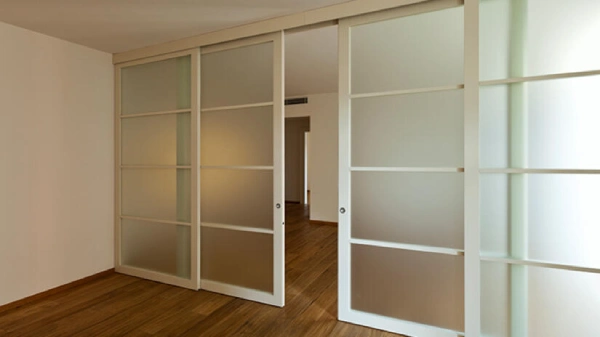
Glass Doctor highlights the benefits and drawbacks of installing glass pocket doors.
|
A glass pocket door refers to the type of sliding glass door that disappears into a compartment in the adjacent wall. Glass pocket doors can save space and enhance the aesthetics of a living space, but at what cost?
Pros of Glass Pocket Doors
Glass pocket doors can open your home and modernize the appearance of your living space. This type of glass sliding door has a lot of other potential benefits, too. Some pros of choosing a glass pocket door can include:
- Clearance: If you have a small home, a swinging door can take up much more space than a glass pocket door, which disappears right into the wall!
- Wall space: Additionally, swinging doors can limit your wall space. You can't exactly hang a piece of art on the wall where your door will hit it! Glass pocket doors will solve this problem.
- Aesthetics: Glass pocket doors are a sleek and stylish alternative to a bulky swinging door.
Cons of Glass Pocket Doors
While glass pocket doors can be a great addition to your home, there are other aspects to consider before making your decision. Issues like accessibility and functionality could make a glass pocket door a poor choice for some homeowners. Learn about some of the cons that may come with glass pocket doors:
- Noise: Glass pocket doors aren't as sturdy as a traditional door. Think about it – pocket doors slide across a track, so there are more open edges where noise can escape. In addition, doors can screech along their tracks.
- Functionality: Due to the construction of sliding tracks, some problems can arise with the functionality of glass pocket doors. Doors can fall off their tracks, get stuck or have trouble locking.
- Accessibility: Anyone with issues like arthritis in their hands may struggle with glass pocket doors. Full dexterity is essential to comfortably slide a pocket door open and shut.
Installing Glass Pocket Doors
Once you've decided on a glass pocket door, the time will come to install this new addition to your home. The installation process for glass pocket doors can be a relatively simple process, if you're using the right materials and follow the correct procedure.
First and foremost, there are some essential tools you will need to gather before you begin assembling. These tools include:
- Flat-head screwdriver
- Level
- Tape measure
- Miter saw
- Framing nailer
- Drill
- Phillips-head screwdriver
In addition, you will need an assortment of materials before you start to build. These materials include:
- Pocket door hardware
- 2x4 board
- Drywall
- Wood trim
- Door
- Screws
- Finish nails
- Drywall screws
Before you attempt this DIY project, make sure you familiarize yourself with this glass pocket door installation process:
- After old drywall, studs, plates and sills have been removed, attach the new header in the door opening.
- Attach split studs. These studs are wrapped in metal. They form a hollow channel in the middle for the pocket door to pass through. Your drywall gets installed onto the exterior of the split studs.
- Attach your hanging brackets to the top of your sliding door. Then, slide the wheels into the track on the header.
- Attach your sliding door to the wheels. Next, install the guiding track at the bottom.
- Install door pulls.
- Hang new drywall.
- Measure, cut and install trim around the door.
Glass Doctor Can Help with Glass Pocket Door Installations
Sometimes, DIY projects like this one don't always go as planned. Good news – Glass Doctor is here to solve your panes! We are fully equipped to help you install and clean your new glass pocket door. Reach out to us today!

